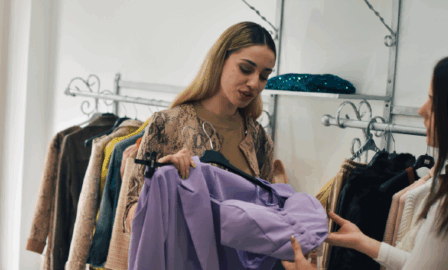How Will 5G Impact Marketing for Retailers?
5G, the next generation of cellular data, is coming to select locations as early as the end of 2019. Its capabilities will provide the bandwidth needed to connect the ever-growing number of IoT devices and will allow users to stream content at unprecedented speeds. The initial release will boost bandwidths by 10 to 20 percent, but predictions show that rates will reach 10GB per second, fast enough for users to download a full-length movie over data in less than ten seconds. So, how will 5G impact retailers? 5G technology will impact how users interact with brands both in-store and online. The gradual, staged release of 5G will give retail marketers time to update their digital strategies to align with new consumer expectations.
Improving the In-Store Experience
While 5G will make online shopping even easier, this technology also has the potential to draw more customers back into brick-and-mortar stores through the integration of digital experiences. As smart watches and other wearables become more common, retailers could push store maps or customized deal alerts to shoppers based on their location. More people will also expect to be able to pay through their phones or smart watches instead of having to use a credit card. Increased connectivity will enable business to gather unparalleled insights about foot traffic and consumer behaviors. With that in mind, it’s important to stay mindful of privacy regulations amidst the excitement. At the very least, the trend of shoppers using their phone as a complimentary element of an in-store visit will continue to grow as more information becomes available faster with the rollout of 5G.
Beyond just a more connected shopper, 5G can allow for more connected stores as well. For all types of retailers, the improvement of IoT devices will optimize stocking capabilities and lead to happier customers. Sixty-eight percent of retailers said that they are investing in technology to improve product availability, including mobile inventory lookup and RFID smart labels. Faster data speeds will create other kinds of opportunities to improve user experience. Dressing-room displays that let customers ask for a piece of clothing in another size already exist in some stores, but these interactive screens could do even more. Shoppers could receive suggestions for other items that would go with the clothes they’re trying on, or they could quickly send a full-length photo of an outfit to a friend to get approval before deciding to make a purchase.
Impact to Mobile Ecommerce
Ensuring ecommerce platforms are ready to handle 5G users can help business capture online sales. As high-quality cell data becomes accessible in broader locations, more consumers than ever before will be able to shop effortlessly on mobile. Shoppers won’t have to wait for better connectivity in order to purchase something they’re considering in that moment. Customer service chat bots will be able to answer questions and direct requests without causing lag times.
Data requests entering at lightning speed requires latency and bandwidth to improve together to achieve optimal loading times. Since streaming will also become exponentially faster, watching videos on mobile will likely continue to grow in popularity. With faster speeds at their fingertips, companies can consider integrating more video and high quality images into their marketing campaigns, whether online or at the point-of-purchase.
Expansion of VR and AR
Virtual reality (VR) and augmented reality (AR) are other ways in which consumers can experience retail digitally. While the combined global market for AR and VR is projected to reach $80 billion by 2025, it’s likely that AR will be the more valuable of two technologies to retailers. Ikea has already experimented with using AR to display different kitchen options as an overlay in their Australian locations. Sephora launched an app that allows users to try on makeup virtually to assess how a product might appear on their unique skin tone. A shopper could see how a piece of clothing would fit their body without having to physically try it on. AR would also make it simple for users to envision what their home would look like with a new paint color or piece of furniture. More powerful devices with faster download speeds can help make the growth of AR and VR sustainable and more ubiquitous across retail as it will become more convenient and accessible for customers at large.
The introduction of faster, more powerful cellular data will evolve how shoppers want to interact with retail locations onsite and with brands on mobile. 5G will augment mobile capabilities while simultaneously moving users beyond their smartphones and into a richer external environment. Retailers need to ensure that they are considering the impacts of 5G as they draw out their technology and customer experience roadmap for 2020 and beyond.
Subscribe to Clarkston's Insights
Coauthor and contributions by Sabrina Zirkle



